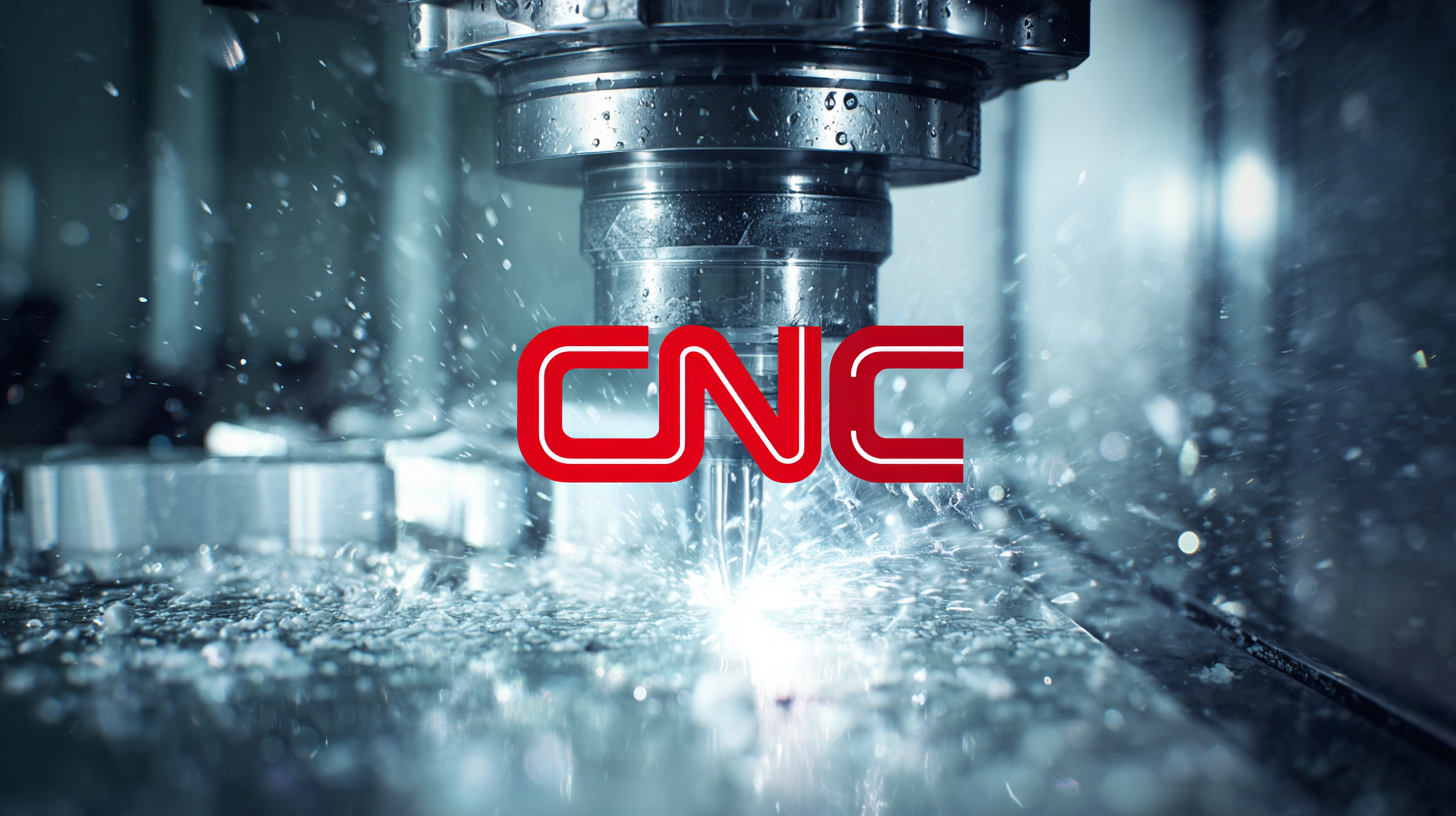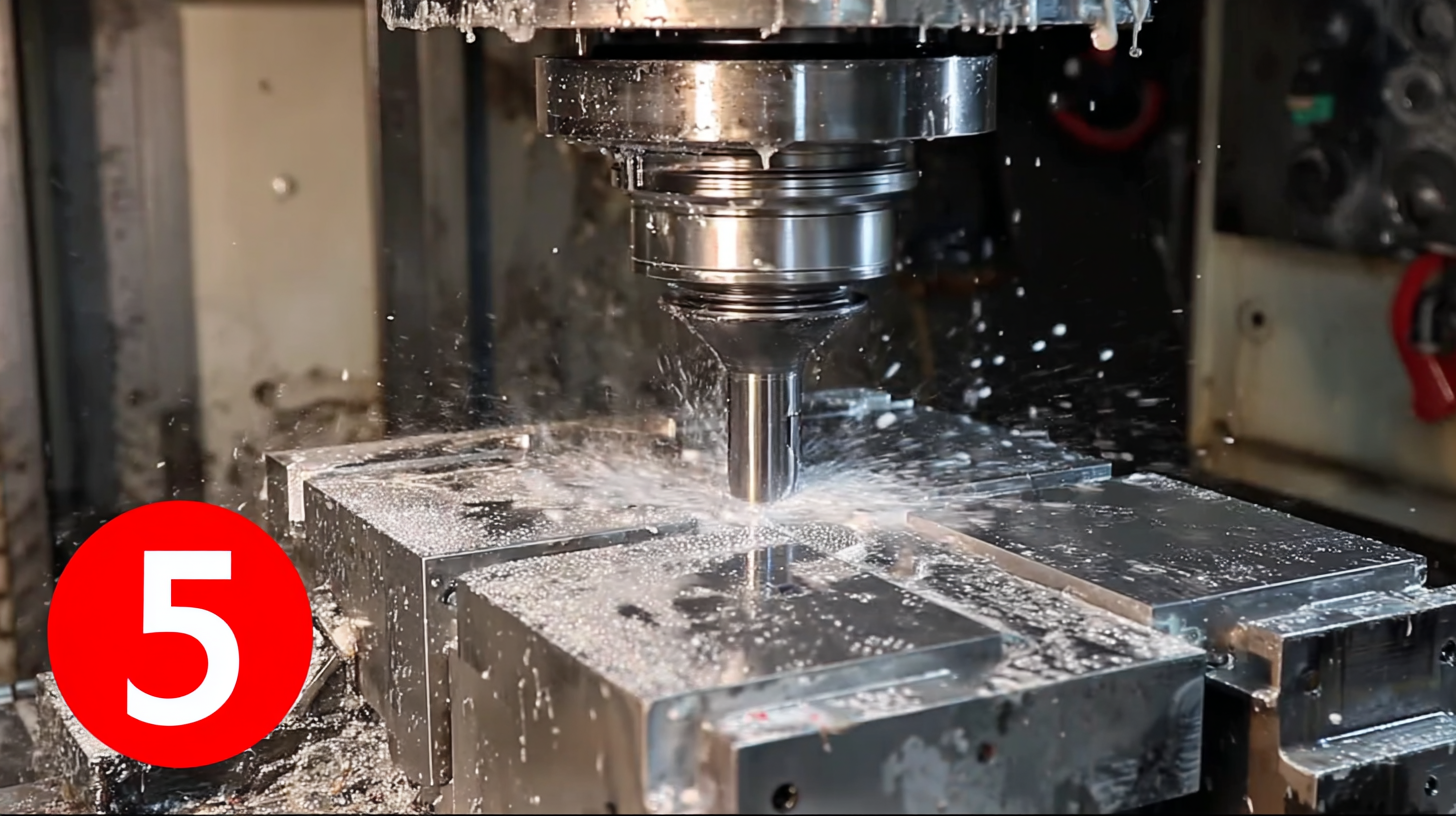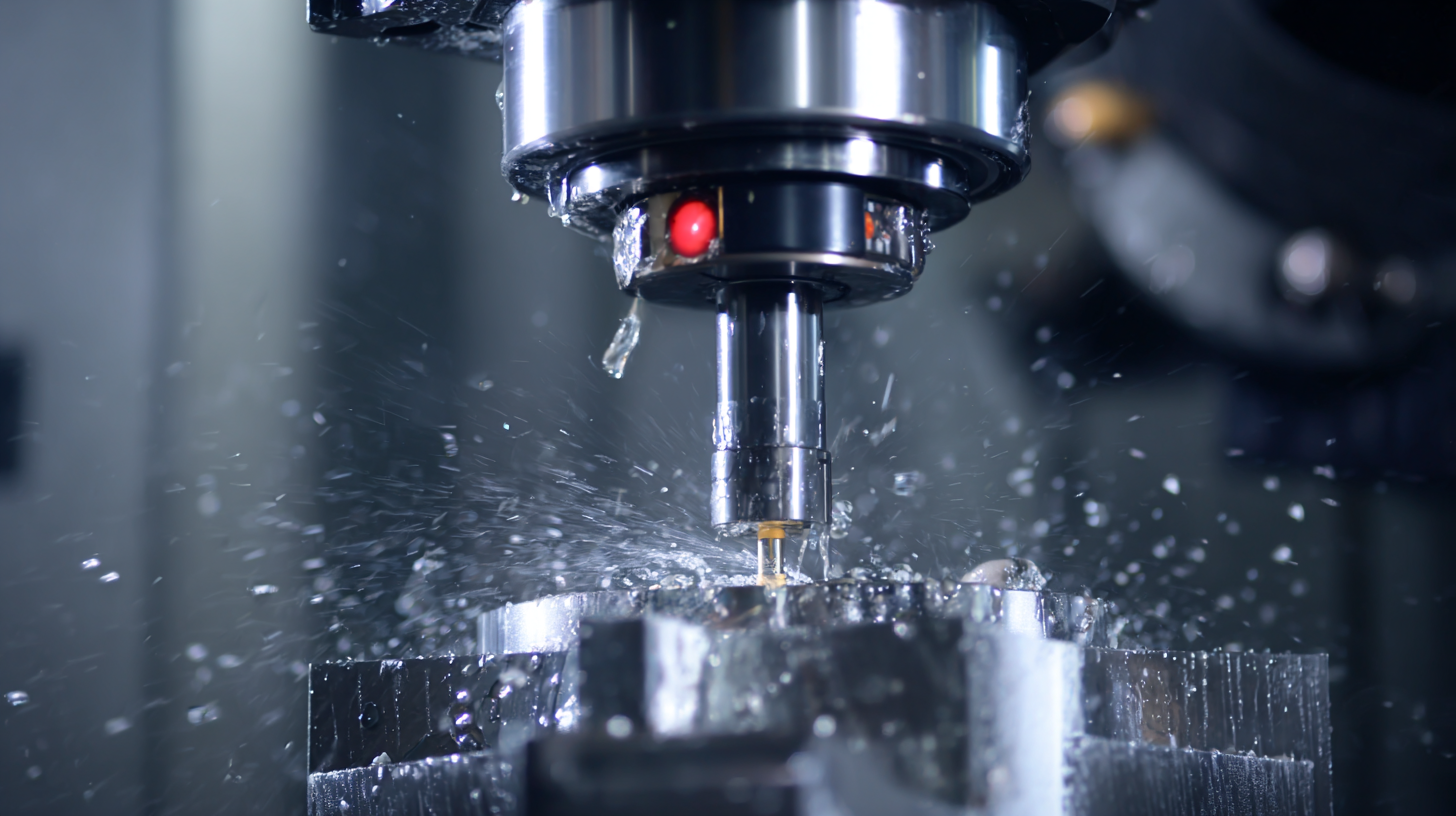7 Reasons Why the Best 5 Axis CNC Milling Machines Are Essential for Modern Manufacturing
In the rapidly evolving landscape of modern manufacturing, the importance of cutting-edge technology cannot be overstated. Among the various innovations, the 5 axis CNC milling machine stands out as a pivotal tool that drives efficiency, precision, and versatility in production processes. As "Strength Factory, Chinese Manufacturing, Exporting Globally" underscores, the integration of advanced machinery such as the 5 axis CNC milling machine is essential for factories aiming to enhance their competitiveness on the global stage. This technology allows manufacturers to create intricate designs and complex geometries that traditional machining methods cannot achieve, ultimately leading to superior product quality and reduced lead times. In this blog, we will explore seven compelling reasons why investing in the best 5 axis CNC milling machines is vital for any forward-thinking manufacturing operation.

The Evolution of CNC Machining: Why 5 Axis Technology is Game-Changing
The evolution of CNC machining has paved the way for 5-axis technology to emerge as a game changer in the manufacturing sector. This advanced technology allows for unprecedented flexibility and precision, enabling manufacturers to achieve complex geometries that were once deemed impossible with traditional machining methods.
 By utilizing five simultaneous axes of movement, manufacturers can create parts with intricate contours and fine details, thereby enhancing product quality and reducing production times significantly.
By utilizing five simultaneous axes of movement, manufacturers can create parts with intricate contours and fine details, thereby enhancing product quality and reducing production times significantly.
In line with current trends towards sustainability and efficiency in manufacturing, 5-axis CNC machines play a critical role in the circular economy. As production and consumption patterns shift towards more sustainable practices, these machines contribute by minimizing waste and maximizing material utilization. The integration of smart automation and digital technologies into 5-axis machining illustrates how manufacturers are embracing innovation to meet both environmental goals and market demands.
Countries like China are leading these advancements, making strides in design and functionality that position them at the forefront of the global manufacturing landscape. As we move towards Industry 5.0, the significance of 5-axis technology in modern production will only continue to grow, setting new standards for efficiency and precision.
Key Advantages of 5 Axis CNC Milling in Modern Manufacturing
The integration of 5 axis CNC milling machines is transforming modern manufacturing by delivering unprecedented precision, flexibility, and efficiency. According to a report by MarketsandMarkets, the global CNC machine market is projected to reach $100 billion by 2025, with a significant portion driven by advancements in 5 axis technology. This capability allows manufacturers to achieve complex geometries and intricate designs that were previously unfeasible with traditional 3 axis machines. By enabling the cutting tool to approach the workpiece from multiple angles, 5 axis milling enhances dimensional accuracy while reducing setup times and minimizing the need for tool changes.
Moreover, the improved efficiency of 5 axis CNC milling operations translates to significant cost savings for manufacturers. Research from the International Journal of Advanced Manufacturing Technology indicates that companies utilizing 5 axis machines have experienced a reduction in production time by as much as 25% compared to conventional 3 axis machining. This means that not only are manufacturers able to produce high-quality components at a faster rate, but they can also respond more rapidly to market demands and customization requests. As industry competition intensifies, investing in 5 axis CNC milling technology becomes not just advantageous but essential for staying ahead in the marketplace.
Market Trends Shaping the Future of CNC Milling Machines by 2025
The CNC machine market is on a trajectory of substantial growth, with projections indicating an increase from $101.22 billion in 2025 to an impressive $195.59 billion by 2032, exhibiting a compound annual growth rate (CAGR) of 9.9%. This upward trend is influenced by various market dynamics, including advancements in technology, increasing automation across industries, and a growing demand for precision manufacturing. By 2025, the necessity for high-quality engineering solutions will drive manufacturers to invest in modern CNC milling machines, making them essential for staying competitive in the rapidly evolving landscape of manufacturing.
In parallel to this growth, the market for woodworking router bits is also expected to flourish between 2025 and 2035, driven by the increasing emphasis on accuracy and efficiency in woodworking processes. As manufacturers aim to enhance machining capabilities, cutting fluids are set to play a pivotal role in improving efficiency and extending the lifespan of tools. The innovations seen in these auxiliary markets will bolster the CNC machine industry, ensuring that companies are well-equipped to meet the demands of their clients and maintain high standards of production excellence.

Innovations Driving the Development of Advanced 5 Axis CNC Technology
The rapid pace of technological advancements is reshaping the landscape of modern manufacturing, particularly with the evolution of 5 axis CNC milling machines. Innovations in software and hardware are driving the development of these advanced technologies, making them more accessible and efficient for manufacturers. One significant innovation is the integration of artificial intelligence and machine learning algorithms, which are enhancing precision and automating complex machining processes. This enables manufacturers to reduce waste and streamline production, thus achieving higher levels of productivity.
Moreover, advancements in materials science are contributing to the effectiveness of 5 axis machining. With the introduction of more robust and lightweight materials, manufacturers can create intricate designs that were once deemed impossible. This versatility is crucial for industries such as aerospace and medical technology, where precision and reliability are paramount. Additionally, improvements in vibration control and thermal management systems ensure that these machines can maintain tight tolerances even during extended operation.
As these innovations continue to unfold, the role of 5 axis CNC milling machines becomes increasingly essential for businesses aiming to stay competitive in the ever-evolving manufacturing landscape.
How 5 Axis CNC Milling Machines Improve Efficiency and Precision in Production
In the rapidly evolving landscape of modern manufacturing, 5-axis CNC milling machines have become indispensable due to their ability to enhance efficiency and precision. This technology allows for simultaneous movement along multiple axes, enabling the machining of complex shapes with greater accuracy. According to market forecasts, the global CNC machine market is expected to grow from $101.22 billion in 2025 to $195.59 billion by 2032, reflecting a compound annual growth rate (CAGR) of 9.9%. This significant growth underscores the critical role that advanced machining technologies, such as 5-axis systems, play in meeting industrial demands.
To boost efficiency in production, manufacturers should consider integrating 5-axis CNC milling machines into their operations. These machines reduce setup times and increase machining versatility, allowing for multiple operations to be performed without the need for repositioning parts. A tip for businesses is to invest in training programs for operators to maximize the capabilities of their 5-axis machines, as skilled handling can lead to noticeable improvements in output and product quality.
Additionally, it's important to keep an eye on market trends in precision engineering. The precision engineering machines market is projected to expand from USD 20.09 billion in 2025 to approximately USD 29.16 billion by 2034, indicating a growing demand for highly accurate machining solutions. Implementing 5-axis CNC technology is a strategic way to not only meet this demand but also to remain competitive in an increasingly automated industry. Regularly assessing the equipment's performance and upgrading software can further ensure that manufacturers stay at the forefront of innovation and efficiency.
7 Reasons Why the Best 5 Axis CNC Milling Machines Are Essential for Modern Manufacturing
| Feature | Benefit | Impact on Manufacturing |
|---|---|---|
| Multi-Axis Capabilities | Enables complex part geometries | Increases design flexibility and innovation |
| Increased Tool Life | Optimized cutting angles reduce wear | Decreases downtime and maintenance costs |
| Improved Surface Finish | Higher precision cuts yield better finishes | Enhances product quality and customer satisfaction |
| Reduction in Set-Up Time | Fewer setups needed for complex parts | Increases overall productivity |
| Automation and Programming | Advanced software for easier programming | Reduces labor costs and human error |
| Tighter Tolerances | Ability to machine parts within strict specifications | Essential for aerospace and medical applications |
| Cost-Effectiveness | Lower long-term operational costs | Improves the bottom line for manufacturers |
